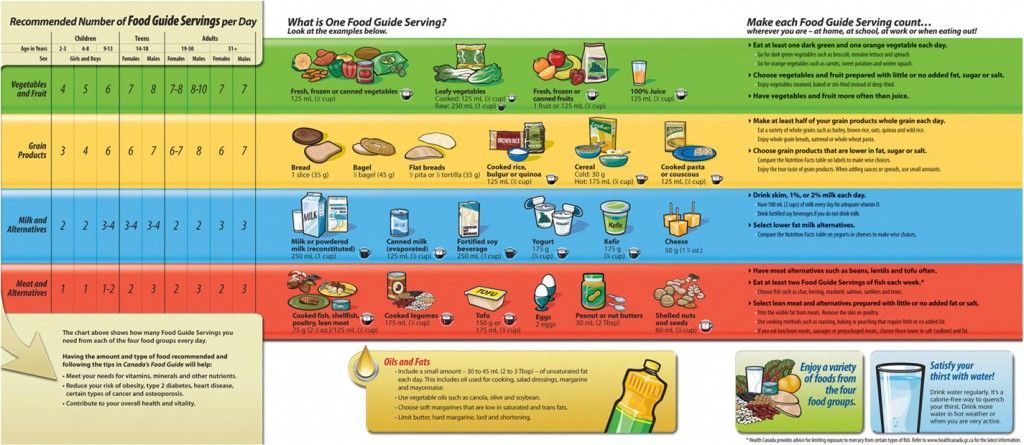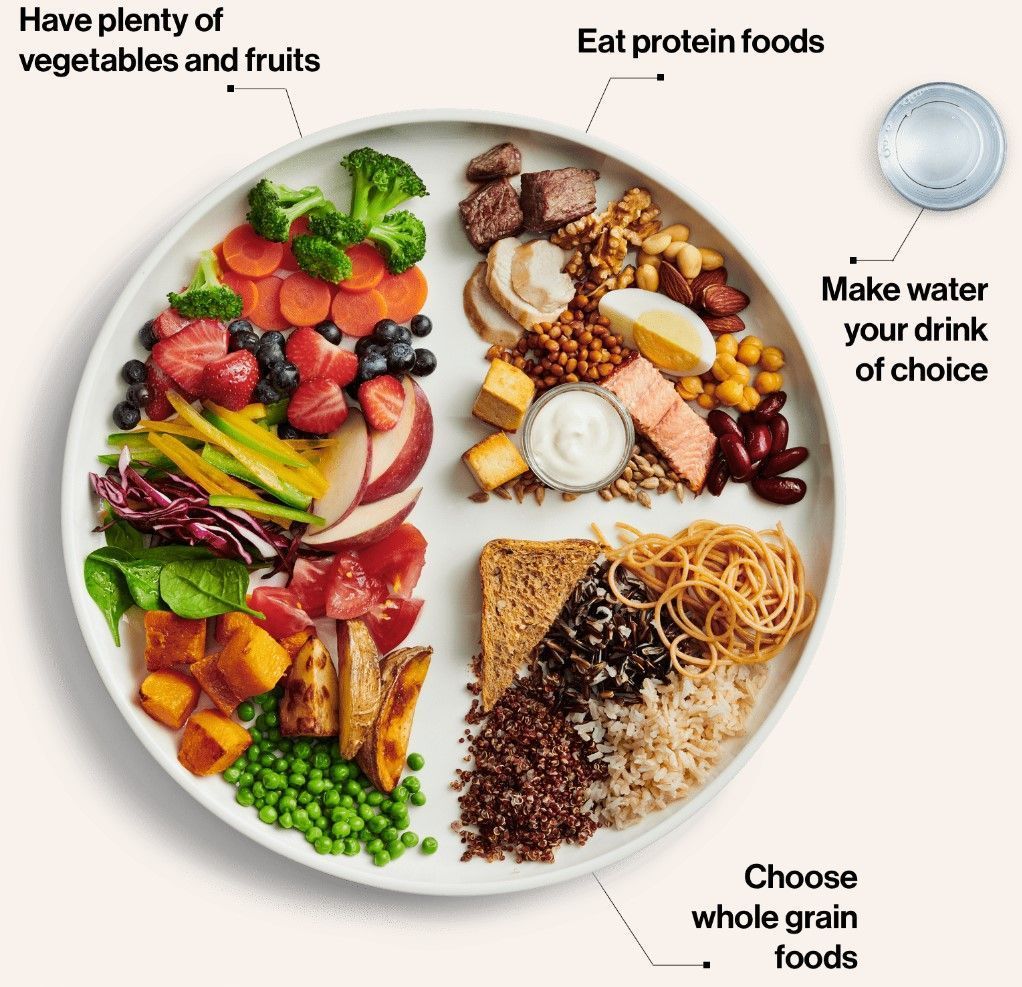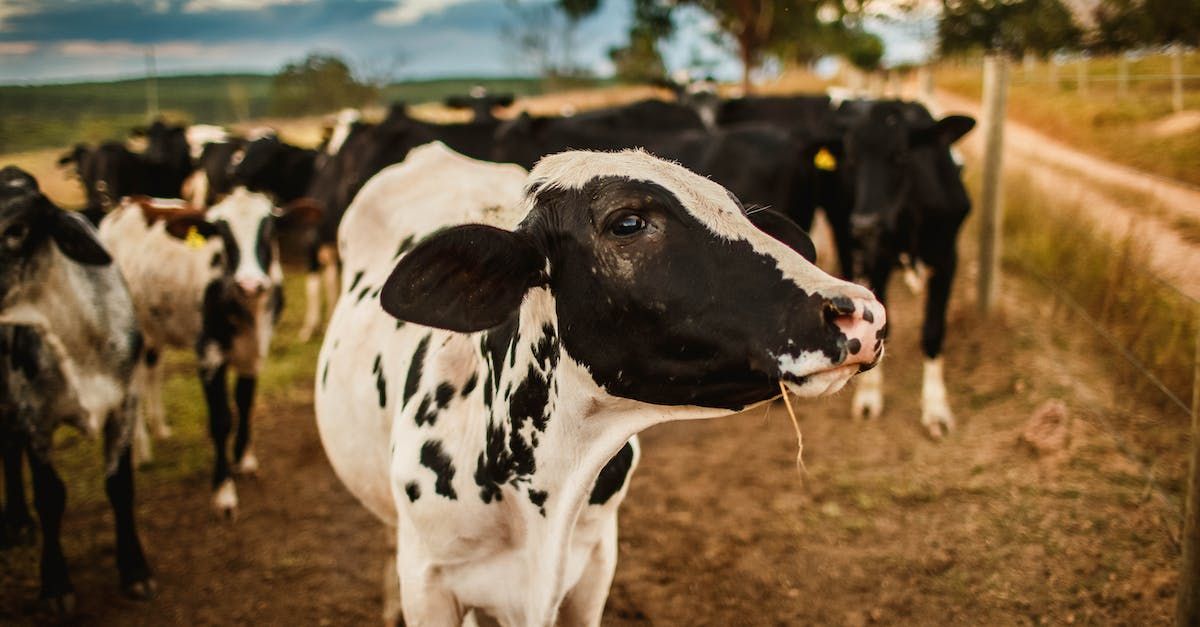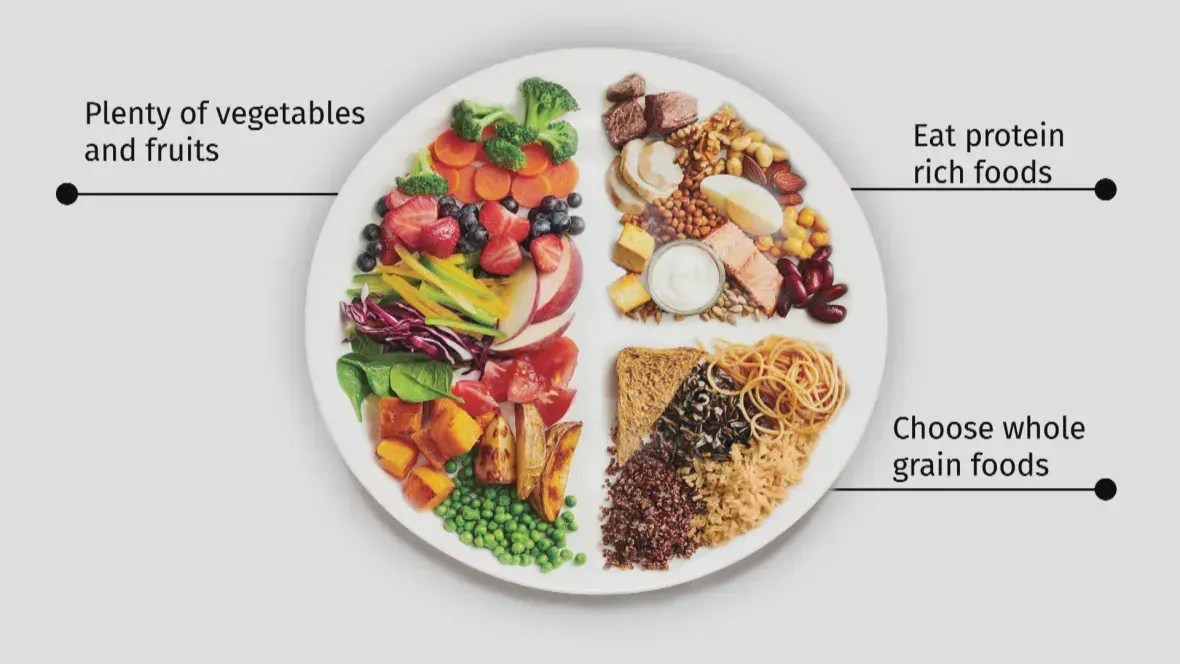How Has Canada's Food Guide Changed Over Time?
A lot has changed in the last 80 years
By Nicole Gavigan, Education Specialist at Reimagine Agriculture
From its earliest days as a set of rules to help Canadians with wartime food rationing, to its current role as an important tool that reflects modern nutritional science, Canada’s Food Guide has been through a lot!
In 1942, Canada’s first-ever Food Guide was released, under the name “Canada’s Official Food Rules.” World War II ignited a time of scarce supplies and food rationing, prompting the government to design a guide to help Canadians stay healthy while navigating food scarcity.
Canada's First Ever Food Guide - Released in 1942

Each food group had a recommended number of daily servings, but milk had a defined serving size. Adults were advised to drink 1/2 pint, and children more than 1 pint of milk every day. To align with food rations and scarce food supplies, these serving sizes would have provided only about 70% of what was considered adequate nutritional intake at the time.
Canada’s Food Rules evolved twice in the 1940s, with new editions released in 1944 and 1949. These editions saw increased serving recommendations for milk (twice as much as before!), and reduced the number of food groups to 5 by moving cheese and eggs to the Meat and Fish category. These early versions of the guide stressed that the foods in these 5 categories were important for health, and should be eaten every day.
The first updated guide was released in 1944

Canada’s first in-colour food guide was released in 1949

The document wasn’t updated again until 1961, when Canada’s Food Rules officially became Canada’s Food Guide, the name it still holds today.
Recommendations for milk remained high, but were now more specific to life stages:
- 2.5 cups daily for children
- 4 cups daily for adolescents, pregnant, and nursing women
- 1.5 cups daily for adults
The 1961 edition was released with its official new name

The 1961 Guide was used for sixteen years, until its drastic update and re-release in 1977 saw five food categories shrink to four, with Fruits and Vegetables joining together. The guide also had daily serving recommendations for each food group, and for the first time, detailed how much food is in one serving.
The 1977 version provided serving sizes for all food groups


By 1982, growing evidence of the links between the foods we eat and chronic illnesses like cardiovascular disease, put a greater focus on health and disease prevention. Canada’s Food Guide now recommended limiting our intake of fat, sugar, salt, and alcohol, and balancing our food intake with exercise and physical activity.
The 1982 guide included tips on healthy eating through variety, balance, and moderation


Ten years later, Canada’s Food Guide got another big makeover, becoming Canada’s Food Guide to Healthy Eating in 1992, and focused on the fat content of foods, promoting “lower fat” food and dairy options.
The 1992 Guide introduced the familiar rainbow image

Fifteen years later, the 2007 version, called Eating Well with Canada’s Food Guide, was released with major design changes. Now a six page fold-out document, the guide had one whole page dedicated to daily serving recommendations for both males and females, in six different age categories, and for each food group! Although the serving recommendations, and the new Guide itself, were carefully designed according to current nutritional evidence by age and sex, it was criticized for being overly complicated and difficult to use.
The 2007 edition was the most detailed guide ever released

From: Food For Health
Health Canada heard that message loud and clear, as is evident from the newest version of Canada’s Food Guide, released in 2019. For the first time, the Guide is based on photos of food, with a single image of a plate full of fresh, colourful fruits, vegetables, whole grains, and proteins (albeit, mostly plant-based!)
Notice the simple messages promoting healthy eating behaviours, including “Be mindful of your eating habits” and “Cook more often”.
Serving recommendations, and serving size measurements are gone entirely. And so is the milk! Milk isn’t mentioned at all in the 2019 Guide, although a small cup of yogurt can be seen on the plate of food. This is a dramatic change from the 1961 recommendation of 4 cups of milk daily for teens.
Canada’s newest Food Guide, released in 2019, focuses on overall food proportions and simple messaging


From: Canada's Food Guide
With that in mind, we are happy to see Canada’s Food Guide staying up-to-date and relevant as we learn more about food, nutrition, and our health.
To learn more about the new guide, and its potential impacts on public and environmental health,
check out our latest and greatest educational video series here!











